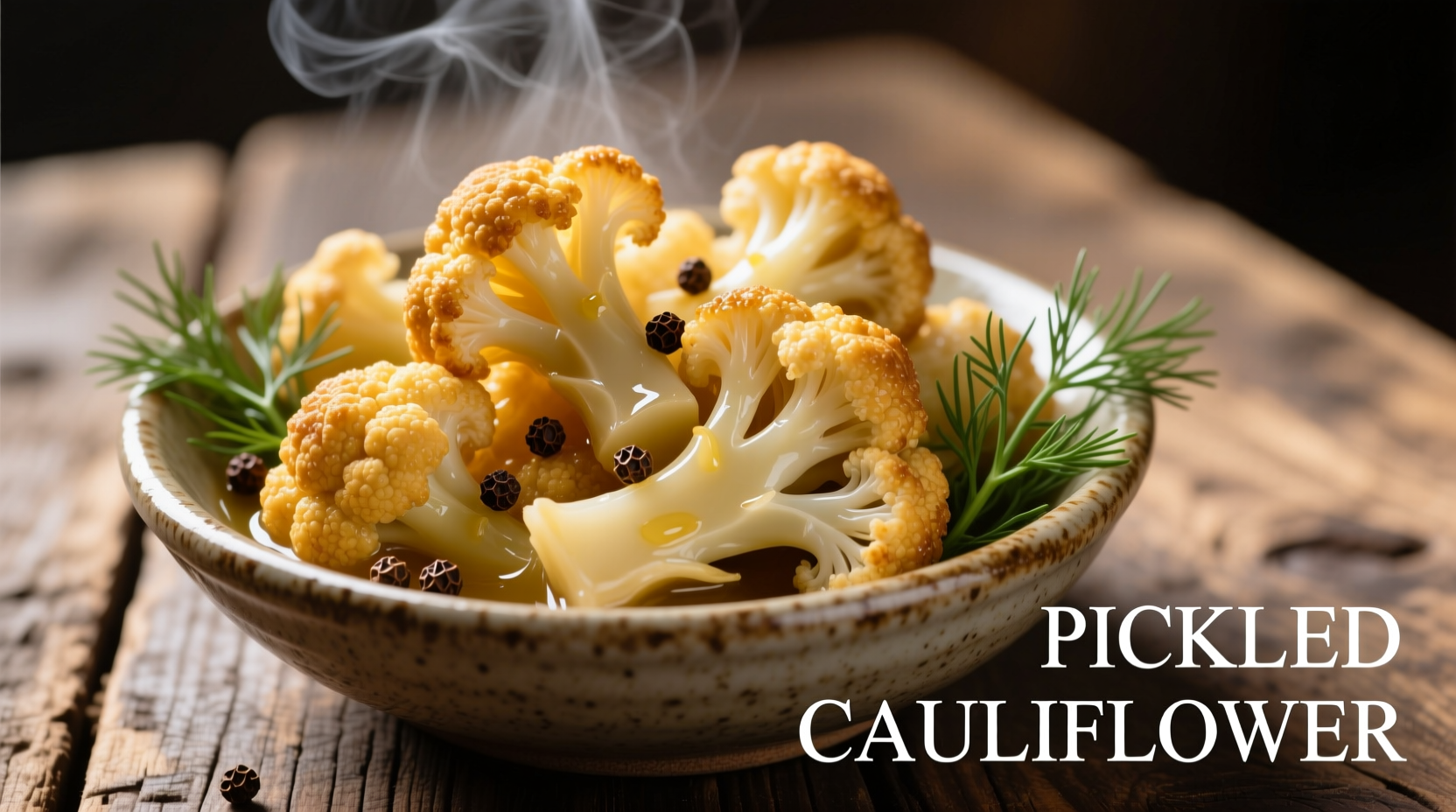Transform ordinary cauliflower into a vibrant, shelf-stable condiment with this comprehensive guide to pickling. Whether you're preserving a garden bounty or seeking new ways to enjoy this versatile vegetable, pickled cauliflower delivers complex flavors and satisfying crunch that elevates everyday meals. Our step-by-step instructions draw from food science principles and culinary expertise to ensure success every time.
Why Pickle Cauliflower?
Cauliflower's neutral flavor profile makes it an ideal canvas for pickling. Unlike stronger vegetables, it readily absorbs spices while maintaining its crisp texture through the pickling process. The resulting product offers:
- Extended shelf life (up to 6 months refrigerated)
- Probiotic benefits in fermented versions
- Versatility across cuisines from Mediterranean to Asian
- Lower sodium options compared to many preserved foods
According to the National Center for Home Food Preservation, properly pickled vegetables maintain safety and quality when processed using tested methods with adequate acidity levels.
Essential Equipment Checklist
Before starting your pickling journey, gather these kitchen essentials:
- Glass jars with airtight lids (Mason jars work perfectly)
- Non-reactive pot (stainless steel or enamel)
- Wooden or plastic utensils (avoid metal)
- Canning funnel and jar lifter
- Measuring cups and spoons
- Colander for washing
| Pickling Method | Processing Time | Shelf Life | Flavor Development |
|---|---|---|---|
| Quick Pickling (Refrigerator) | 15 minutes active | 2-3 months | Immediate tanginess |
| Water Bath Canning | 25 minutes processing | 12-18 months | Mellows over weeks |
| Fermented Pickling | 5-14 days fermentation | 6-8 months | Complex, evolving flavors |
This comparison shows why quick pickling suits beginners while water bath canning provides pantry stability. The USDA Complete Guide to Home Canning emphasizes that proper acidity (pH below 4.6) prevents harmful bacteria growth in canned goods.
Perfect Pickling Brine Formula
The foundation of great pickled cauliflower is a balanced brine. This tested ratio ensures safety and flavor:
- 2 cups distilled white vinegar (5% acidity)
- 2 cups water
- 3 tablespoons pickling salt (no iodine)
- 1 tablespoon sugar (optional)
Never reduce the vinegar quantity as this compromises safety. The National Center for Home Food Preservation confirms that maintaining proper vinegar-to-water ratios prevents botulism risk in home-canned products.

Step-by-Step Pickling Process
Preparation Phase (15 minutes)
- Wash cauliflower thoroughly and cut into uniform 1.5-inch florets
- Blanch in boiling water for 3 minutes to preserve crunch
- Immediately transfer to ice water bath for 5 minutes
- Sterilize jars by boiling for 10 minutes or running through dishwasher
Flavor Building (10 minutes)
Customize your flavor profile with these spice combinations:
- Classic Dill: 2 sprigs fresh dill, 3 garlic cloves, 1 teaspoon dill seed
- Spicy Curry: 1 tablespoon curry powder, 1 sliced jalapeño, 1 teaspoon turmeric
- Mediterranean: 1 teaspoon oregano, 5 black peppercorns, 2 bay leaves
Processing Phase (20 minutes)
- Bring brine ingredients to rolling boil in non-reactive pot
- Place spices and cauliflower in sterilized jars leaving 1/2 inch headspace
- Pour hot brine over cauliflower covering completely
- Remove air bubbles with non-metallic utensil
- Wipe rims clean and seal with lids
- Process in boiling water bath for 10 minutes (adjusting for altitude)
Storage Guidelines and Safety
Proper storage ensures both safety and quality:
- Water bath canned jars: Store in cool, dark place for 12-18 months
- Refrigerator pickles: Consume within 3 months
- Always refrigerate after opening any jar
- Discard if you notice cloudiness, mold, or bulging lids
Understanding context boundaries prevents food safety issues. Pickling works best with fresh, firm cauliflower harvested within 24-48 hours. Avoid using overripe or damaged produce as this increases spoilage risk. The FDA Food Code specifies that properly acidified pickled vegetables maintain safety through pH control rather than refrigeration alone.
Troubleshooting Common Issues
Problem: Mushy cauliflower
Solution: Reduce blanching time to 2 minutes and ensure immediate ice bath transfer. Older cauliflower naturally softens more during processing.
Problem: Cloudy brine
Solution: Use pickling salt instead of table salt which contains anti-caking agents. Cloudiness doesn't indicate spoilage but affects appearance.
Problem: Weak flavor development
Solution: Allow refrigerator pickles 2 weeks for full flavor development. Canned versions reach peak flavor after 4-6 weeks of storage.
Creative Serving Suggestions
Move beyond basic snacking with these culinary applications:
- Add to grain bowls for acidic contrast
- Chop finely for relish on fish tacos
- Blend with mayo for cauliflower 'tartar' sauce
- Include in antipasto platters alongside olives and cheeses
- Chop and mix into tuna or chicken salad











 浙公网安备
33010002000092号
浙公网安备
33010002000092号 浙B2-20120091-4
浙B2-20120091-4